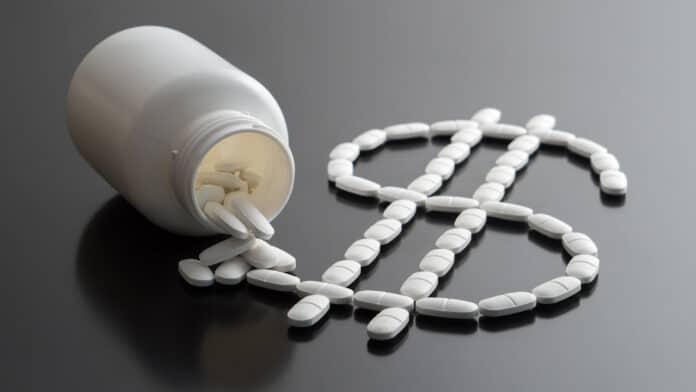
The cost of prescription drugs has been rising for years, and many medications are now unaffordable for a significant number of Americans. According to a recent American Journal of Medicine survey, 20 percent of cancer patients reported taking less medication than their doctor prescribed to save money. This problem is not limited to cancer patients, either. Patients nationwide are choosing to forgo their doctor’s orders because they cannot afford their medications. A Harvard study found that at least 6 percent of privately insured, 10 percent of Medicaid-insured, and 14 percent of uninsured adults do not take their medication to avoid financial stress. As politicians debate about how to make prescription drugs more affordable, I think we first need to take a step back and explore how pharmaceuticals got so expensive.
In the pharmaceutical industry, the distribution and pricing of drugs is complicated, and there are many different transactions along a pill’s journey from manufacturer to patient. In short, the drug distribution cycle begins with a pharmaceutical manufacturer (Pfizer, Johnson & Johnson), which produces a drug. Next, the drug is sold to a wholesaler (Cardinal Health, Amerisource Bergen) and distributed to pharmacies (CVS, Walgreens, etc.). Finally, the pharmacies dispense the drug to patients.
Drug products are subject to a series of price markup, rebate, and discount agreements throughout the transactions. Some of these agreements, such as original list pricing and wholesale costs, are calculated according to industry standards. Some, however, are negotiated in private between manufacturers and third-party pharmacy benefit managers. The private pricing agreements, more than the others, have a hand in driving pharmaceutical costs up.
The popular thought is that making drug prices transparent would force the pharmaceutical industry to set fair prices and work on behalf of the public. Many in the industry, as well as economists, have said that total transparency would not necessarily result in lower costs for consumers. For one, the original list price of a drug is often not the price consumers pay, so publicizing it may have little effect for them. Secondly, transparent pricing could allow larger players to price their competition out of the market. Some argue that this could drive prices up even more in the long run. Setting concrete standards for private pricing negotiations between manufacturers and pharmacy benefit managers would perhaps be more effective than simply publicizing drug list prices. This could lead to more accountability, transparency, and balancing of power in one of the most profitable markets in the country.
Despite systemic challenges, there are ways for the individual consumer to mitigate high pharmaceutical costs. For starters, research your medications to see if there are lower-cost options available. GoodRx is a free website that compares prices for brand name and generic medications at pharmacies near you and provides other cost-saving opportunities like coupons. You can also ask your physician to help you save money on prescriptions whenever possible. If you are already aware of generic options, this can be a quick conversation. Ultimately, the informed patient has an advantage over the uninformed. Understanding drug cost origins, your benefits, and your doctor’s recommended treatment plan can help you make the best of an imperfect situation.

